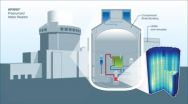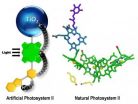(Press-News.org) Bottle gourds traveled the Atlantic Ocean from Africa and were likely domesticated many times in various parts of the New World, according to a team of scientists who studied bottle gourd genetics to show they have an African, not Asian ancestry.
"Beginning in the 1950s we thought that bottle gourds floated across the ocean from Africa," said Logan Kistler, post-doctoral researcher in anthropology, Penn State. "However, a 2005 genetic study of gourds suggested an Asian origin."
Domesticated bottle gourds are ubiquitous around the world in tropical and temperate areas because, while they are edible when young, the mature fruit make ideal lightweight, waterproof, liquid-carrying vessels. They were popular in areas either before development of ceramics or where ceramics never developed.
The 2005 study looked only at targeted sequence markers that turned out not to be informative on the population level, said Kistler. Now we can do sequencing of the large single copy area of the plastid genome, which is about 86,000 base pairs of DNA, he added.
Unlike animals, which have two types of DNA -- nuclear and mitochondrial -- plant cells have three types of DNA -- nuclear, mitochondrial and plastid. Animal mitochondrial DNA is often used in genetic studies because it is completely inherited from the mother and changes very slowly, but in plants, mitochondrial DNA is prone to structural rearrangements, while often carrying a slow mutation rate. The DNA found in plastids such as the organelles that perform photosynthesis and create starch or pigments, is a better choice for plants because it does not recombine, but it mutates fast enough for population-level studies.
The researchers, who report their results in a recent issue of the Proceedings of the National Academy of Sciences, looked at 36 modern samples of bottle gourd and 9 ancient samples. They found that all the ancient bottle gourds from the Americas that were tested fell within the normal variation of the African bottle gourds and not the Asian bottle gourds.
"The best explanation for this is that they came directly from Africa," said Kistler. "However, we wanted to test the possibility that gourds did float from Africa to form New World populations."
Previous studies found that gourds do float in the oceans and that after long periods of time in the ocean they still have viable seeds. The researchers developed an ocean-current drift model that showed that wild African gourds could have simply floated across the Atlantic during the Late Pleistocene. They suggest that large mammals like the mammoth helped naturalized populations establish in the neotropics, because these large mammals were known to eat various members of the family that includes gourds. The seeds are found in ancient deposits of large mammal dung.
Bottle gourds in Africa exist today mostly in the domesticated form, with only small populations of the wild variety in Kenya and Zimbabwe. In the ocean drift model, the researchers looked at realistic, unrealistically conservative and optimistic scenarios. They divided the western coast of Africa by latitude and simulated 12 years of gourd release where one gourd per month entered the ocean in each latitude division. The shortest amount of time it took for a gourd to arrive was 100 days, with an average arrival time of about nine months.
According to the researchers, it is feasible that gourds did float across the Atlantic Ocean frequently. This is especially true of gourds growing near rivers that flow into the ocean.
"It wasn't one gourd that came over and gave rise to all New World gourds," said Kistler. "Populations show up in Florida and Mexico around 10,000 years ago and in Central America a little later."
INFORMATION:
Also working on this project were Álvaro Montenegro, assistant professor or geography, Ohio State University; Bruce D. Smith, curator of North American archaeology, Smithsonian Institution; John A. Gifford, associate professor of marine affairs and policy; Richard E. Green, assistant professor of biomolecular engineering, University of California Santa Cruz; and Lee A. Newsome, associate professor of archaeological anthropology, Penn State.
The National Science Foundation partially supported this work.
Frequent flyers, bottle gourds crossed the ocean many times
2014-02-18
ELSE PRESS RELEASES FROM THIS DATE:
NASA sees Tropical Cyclone 15S form in the Mozambique Channel
2014-02-18
NASA's Aqua satellite passed over Tropical Cyclone 15S as it formed in the Mozambique Channel on Feb. 18 and the AIRS instrument aboard gathered infrared data on its cloud top temperatures and potential.
NASA's Aqua satellite passed over Tropical cyclone 15S on Feb. 18 at 10:53 a.m. EST. The Atmospheric Infrared Sounder or AIRS instrument captured infrared data on the tropical system that showed the highest cloud tops and strongest thunderstorms were in a band that stretched from the east to the south of the center. Cloud top temperatures were near -63F/-52C, indicating ...
Agricultural productivity loss as a result of soil and crop damage from flooding
2014-02-18
URBANA, Ill. – The Cache River Basin, which once drained more than 614,100 acres across six southern Illinois counties, has changed substantively since the ancient Ohio River receded. The basin contains a slow-moving, meandering river; fertile soils and productive farmlands; deep sand and gravel deposits; sloughs and uplands; and one of the most unique and diverse natural habitats in Illinois and the nation.
According to a recent University of Illinois study, the region's agricultural lands dodged a bullet due to the timing of the great flood of April 2011 when the Ohio ...
GW spirituality and health pioneer publishes paper on development of the field
2014-02-18
WASHINGTON (Feb. 18, 2014) — While spirituality played a significant role in health care for centuries, technological advances in the 20th century overshadowed this more human side of medicine. Christina Puchalski, M.D.'94, RESD'97, founder and director of the George Washington University (GW) Institute for Spirituality and Health and professor of medicine at the GW School of Medicine and Health Sciences (SMHS), and co-authors published a commentary in Academic Medicine on the history of spirituality and health, the movement to reclaim medicine's spiritual roots, and the ...
Neuropsychological assessment more efficient than MRI for tracking disease progression
2014-02-18
Amsterdam, NL, February 18, 2014 – Investigators at the University of Amsterdam, The Netherlands, have shown that progression of disease in memory clinic patients can be tracked efficiently with 45 minutes of neuropsychological testing. MRI measures of brain atrophy were shown to be less reliable to pick up changes in the same patients.
This finding has important implications for the design of clinical trials of new anti-Alzheimer drugs. If neuropsychological assessment is used as the outcome measure or "gold standard," fewer patients would be needed to conduct such ...
Artificial cells and salad dressing
2014-02-18
RIVERSIDE, Calif. (http://www.ucr.edu) — A University of California, Riverside assistant professor of engineering is among a group of researchers that have made important discoveries regarding the behavior of a synthetic molecular oscillator, which could serve as a timekeeping device to control artificial cells.
Elisa Franco, an assistant professor of mechanical engineering at UC Riverside's Bourns College of Engineering, and the other researchers developed methods to screen thousands of copies of this oscillator using small droplets. They found, surprisingly, that the ...
CASL, Westinghouse simulate neutron behavior in AP1000 reactor core
2014-02-18
OAK RIDGE, Tenn., Feb. 18, 2014 — Scientists and engineers developing more accurate approaches to analyzing nuclear power reactors have successfully tested a new suite of computer codes that closely model "neutronics" — the behavior of neutrons in a reactor core.
Technical staff at Westinghouse Electric Company, LLC, supported by the research team at the Consortium for Advanced Simulation of Light Water Reactors (CASL), used the Virtual Environment for Reactor Applications core simulator (VERA-CS) to analyze its AP1000 advanced pressurized water reactor (PWR). The testing ...
SDSC/UC San Diego researchers hone in on Alzheimer's disease
2014-02-18
Researchers studying peptides using the Gordon supercomputer at the San Diego Supercomputer Center (SDSC) at the University of California, San Diego (UCSD) have found new ways to elucidate the creation of the toxic oligomers associated with Alzheimer's disease.
Igor Tsigelny, a research scientist with SDSC, the UCSD Moores Cancer Center, and the Department of Neurosciences, focused on the small peptide called amyloid-beta, which pairs up with itself to form dimers and oligomers.
The scientists surveyed all the possible ways to look at the dynamics of conformational ...
Artificial leaf jumps developmental hurdle
2014-02-18
In a recent early online edition of Nature Chemistry, ASU scientists, along with colleagues at Argonne National Laboratory, have reported advances toward perfecting a functional artificial leaf.
Designing an artificial leaf that uses solar energy to convert water cheaply and efficiently into hydrogen and oxygen is one of the goals of BISfuel – the Energy Frontier Research Center, funded by the Department of Energy, in the Department of Chemistry and Biochemistry at Arizona State University.
Hydrogen is an important fuel in itself and serves as an indispensible ...
Wistar scientists develop gene test to accurately classify brain tumors
2014-02-18
cientists at The Wistar Institute have developed a mathematical method for classifying forms of glioblastoma, an aggressive and deadly type of brain cancer, through variations in the way these tumor cells "read" genes. Their system was capable of predicting the subclasses of glioblastoma tumors with 92 percent accuracy. With further testing, this system could enable physicians to accurately predict which forms of therapy would benefit their patients the most.
Their research was performed in collaboration with Donald M. O'Rourke, M.D., a neurosurgeon at the University ...
COXEN model picks the best drug for ovarian cancer
2014-02-18
There are three common drugs for advanced ovarian cancer: paclitaxel, cyclophosphamide, and topotecan. Like a shell game, if you pick the right drug a patient is likely to respond. And, unfortunately, picking the wrong drug can lead to treatment failure. As reported in this month's issue of the journal PLoS ONE, a University of Colorado Cancer Center and University of Virginia study used a sophisticated model of ovarian cancer genetics to match the right tumor with the right drug. Patients who were matched in this way lived an average 21 months longer than patients who ...




